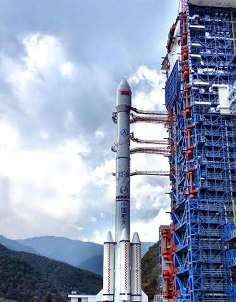The first communications satellite built by China for a European country was launched on Saturday, Jan. 16, China Daily reported.
China Great Wall Industry Corp., a major contractor of the project, said that the BELINTERSAT-1, the first communications satellite to be operated by Belarus, will contribute to improving radio, television and telecommunications and Internet service in the Eastern European nation and its neighboring regions.
According to the report, the satellite was sent off through a Long March 3B rocket from the Xichang Satellite Launch Center in Sichuan Province. The China Academy of Space Technology developed the satellite based on the DFH-4 satellite platform.
The company said that the satellite, which has a designed lifespan of 15 years, will be carrying 38 transponders.
The report said that the first communication satellite was sold by China to an overseas buyer in 2007, when the NigcomSat-1 was launched and then handed over to Nigeria. Following that, the country has exported communications satellites to several developing nations, such as Pakistan, Venezuela and Bolivia.
The BELINTERSAT-1 launch was China's first space mission in 2016, as the country has scheduled to undertake more than 20 Chinese space activities, which include the Shenzhou XI manned spacecraft mission and the missions of the Long March 5 and Long March 7 rockets, among others.
Since 1990, the country has launched 43 rockets to send off 49 satellites into orbit for 20 foreign clients. It was in 1990 when China made its first commercial launch of a communications satellite atop a Long March 3 rocket.
The country's State Administration of Science, Technology and Industry for National Defense (SASTIND) announced on Jan. 14 its plan to send the Chang'e-4 probe to the far side of the moon in 2018 as part of a new round of lunar explorations.
SASTIND said that Chang'e-4 will be the first mission in human history to embark on this expedition.
The country also launched on Dec. 29 Gaofen-4, its most sophisticated observation satellite, as part of the country's high-definition (HD) earth observation project. The satellite is considered as the world's most sophisticated HD geosynchronous orbit remote sensing satellite.



























